The cost of Carpal Tunnel Release in India ranges from INR 218684 to 412424 (USD 2630 to USD 4960)
Carpal tunnel surgery is a procedure to treat the painful carpal tunnel syndrome that is caused due to an overuse injury or a repetitive motion performed by the wrists or the hand. Advance studies and research explains that the syndrome is hereditary in some cases. The syndrome is often associated with rheumatoid arthritis, diabetes, thyroid, and pregnancy. An incision is made at the base of the palm of the hand near the wrist that allows the doctor to see the transverse carpal ligament. Endoscopy is another method used to process this surgery. Stitches are done to close the incision. The patient can get discharged from the hospital after the surgery on the same day if no complications arise. Stitches are removed in a week or two.
India has all the latest medical advancements and well-experienced doctors to perform carpal tunnel release surgery. The hospitals have excellent facilities for diagnosis and post-surgery recovery. The orthopedic doctors in India are efficient enough to perform the Carpal Tunnel Release Surgery without any complications.
India has the best treatment plans for carpal tunnel release at a very nominal cost. The cost of the surgery for Carpal Tunnel Release is USD4300 compared to USD 20000 in the US. You get world-class facilities inclusive of the facility fee, physician’s fee, related medical procedures and drugs required to administer the plan of care at almost one-fifth of the cost of the surgery in western countries.
| City | Minimum Cost | Maximum Cost |
|---|---|---|
| Noida | USD 3150 | USD 3470 |
| Chennai | USD 3970 | USD 4320 |
| Faridabad | USD 3180 | USD 3520 |
| Gurgaon | USD 2230 | USD 2550 |
| Kolkata | USD 3670 | USD 4040 |
| Hyderabad | USD 4490 | USD 4990 |
| Delhi | USD 4330 | USD 4700 |
| Bengaluru | USD 3480 | USD 3840 |
| Greater Noida | USD 3590 | USD 4070 |
| Country | Cost | Local_currency |
|---|---|---|
| Greece | USD 1600 | Greece 1472 |
| Hungary | USD 2640 | Hungary 920198 |
| India | USD 2630 | India 218685 |
| Lithuania | USD 4260 | Lithuania 3919 |
| Poland | USD 6070 | Poland 24523 |
| South Korea | USD 6000 | South Korea 8056140 |
| Spain | USD 6000 | Spain 5520 |
| Thailand | USD 3010 | Thailand 107306 |
| Tunisia | USD 2000 | Tunisia 6220 |
| Turkey | USD 3000 | Turkey 90420 |
| United Arab Emirates | USD 4340 | United Arab Emirates 15928 |
| United Kingdom | USD 2060 | United Kingdom 1627 |
Treatment cost
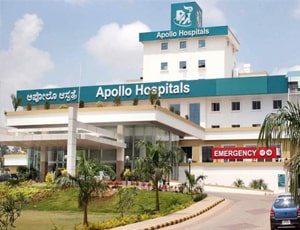
Types of Carpal Tunnel Release in Apollo Hospitals Bannerghatta and its associated cost
| Treatment Option | Approximate Cost Range (USD) | Approximate Cost Range (INR) |
|---|---|---|
| Carpal Tunnel Release (Overall) | 2815 - 4524 | 229250 - 360968 |
| Open Carpal Tunnel Release | 1671 - 3432 | 137061 - 277757 |
| Endoscopic Carpal Tunnel Release | 3081 - 4416 | 254641 - 377155 |
DOCTORS IN 13 SPECIALITIES
FACILITIES & AMENITIES

Types of Carpal Tunnel Release in Fortis Hospital and its associated cost
| Treatment Option | Approximate Cost Range (USD) | Approximate Cost Range (INR) |
|---|---|---|
| Carpal Tunnel Release (Overall) | 2547 - 4071 | 208758 - 333523 |
| Open Carpal Tunnel Release | 1523 - 3051 | 124918 - 249583 |
| Endoscopic Carpal Tunnel Release | 2828 - 4078 | 233187 - 333074 |
DOCTORS IN 12 SPECIALITIES
FACILITIES & AMENITIES
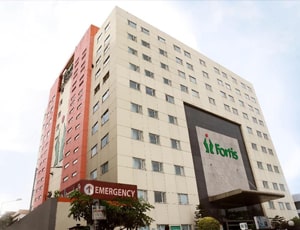
Types of Carpal Tunnel Release in Fortis Hospital and its associated cost
| Treatment Option | Approximate Cost Range (USD) | Approximate Cost Range (INR) |
|---|---|---|
| Carpal Tunnel Release (Overall) | 2541 - 4055 | 209054 - 333903 |
| Open Carpal Tunnel Release | 1520 - 3051 | 124900 - 249061 |
| Endoscopic Carpal Tunnel Release | 2851 - 4065 | 232943 - 332301 |
DOCTORS IN 12 SPECIALITIES
FACILITIES & AMENITIES


Types of Carpal Tunnel Release in Sarvodaya Hospital and Research Centre and its associated cost
| Treatment Option | Approximate Cost Range (USD) | Approximate Cost Range (INR) |
|---|---|---|
| Carpal Tunnel Release (Overall) | 2545 - 4080 | 207873 - 332113 |
| Open Carpal Tunnel Release | 1522 - 3054 | 124617 - 249100 |
| Endoscopic Carpal Tunnel Release | 2831 - 4067 | 233887 - 331994 |
DOCTORS IN 14 SPECIALITIES
FACILITIES & AMENITIES
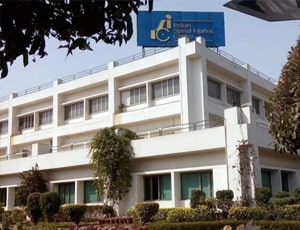
Types of Carpal Tunnel Release in Indian Spinal Injuries Centre and its associated cost
| Treatment Option | Approximate Cost Range (USD) | Approximate Cost Range (INR) |
|---|---|---|
| Carpal Tunnel Release (Overall) | 2544 - 4061 | 208597 - 333021 |
| Open Carpal Tunnel Release | 1523 - 3056 | 124397 - 250139 |
| Endoscopic Carpal Tunnel Release | 2845 - 4075 | 231929 - 332634 |
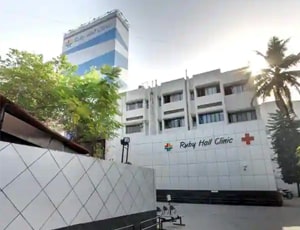
Types of Carpal Tunnel Release in Ruby Hall Clinic and its associated cost
| Treatment Option | Approximate Cost Range (USD) | Approximate Cost Range (INR) |
|---|---|---|
| Carpal Tunnel Release (Overall) | 2330 - 3772 | 193734 - 303582 |
| Open Carpal Tunnel Release | 1419 - 2822 | 116298 - 230026 |
| Endoscopic Carpal Tunnel Release | 2608 - 3734 | 212166 - 307876 |
DOCTORS IN 13 SPECIALITIES
FACILITIES & AMENITIES
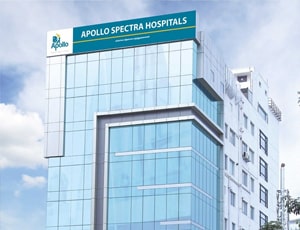
Types of Carpal Tunnel Release in Apollo Spectra Hospitals and its associated cost
| Treatment Option | Approximate Cost Range (USD) | Approximate Cost Range (INR) |
|---|---|---|
| Carpal Tunnel Release (Overall) | 2543 - 4067 | 208177 - 334235 |
| Open Carpal Tunnel Release | 1525 - 3040 | 124915 - 249388 |
| Endoscopic Carpal Tunnel Release | 2837 - 4076 | 233081 - 333990 |
DOCTORS IN 10 SPECIALITIES
FACILITIES & AMENITIES
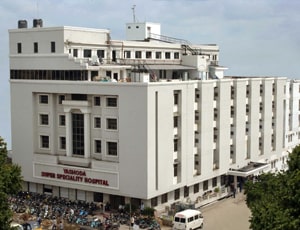
Types of Carpal Tunnel Release in Yashoda Hospital, Malakpet and its associated cost
| Treatment Option | Approximate Cost Range (USD) | Approximate Cost Range (INR) |
|---|---|---|
| Carpal Tunnel Release (Overall) | 2537 - 4079 | 208447 - 333144 |
| Open Carpal Tunnel Release | 1524 - 3042 | 124473 - 248815 |
| Endoscopic Carpal Tunnel Release | 2831 - 4075 | 233236 - 332672 |
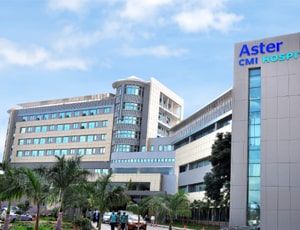
Types of Carpal Tunnel Release in Aster CMI Hospital and its associated cost
| Treatment Option | Approximate Cost Range (USD) | Approximate Cost Range (INR) |
|---|---|---|
| Carpal Tunnel Release (Overall) | 2539 - 4060 | 207908 - 331434 |
| Open Carpal Tunnel Release | 1519 - 3047 | 125354 - 250450 |
| Endoscopic Carpal Tunnel Release | 2832 - 4045 | 232277 - 332679 |
DOCTORS IN 13 SPECIALITIES
FACILITIES & AMENITIES
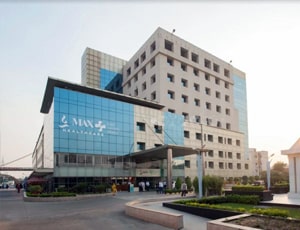
The cost for Carpal Tunnel Release ranges from USD 3520 - 3790 in Max Super Specialty Hospital, Vaishali
Max Super Specialty Hospital, Vaishali located in Ghaziabad, India is accredited by NABH, NABL. Also listed below are some of the most prominent infrastructural details:
DOCTORS IN 14 SPECIALITIES
FACILITIES & AMENITIES
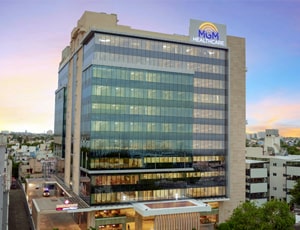
Types of Carpal Tunnel Release in MGM Healthcare and its associated cost
| Treatment Option | Approximate Cost Range (USD) | Approximate Cost Range (INR) |
|---|---|---|
| Carpal Tunnel Release (Overall) | 2544 - 4059 | 207627 - 332679 |
| Open Carpal Tunnel Release | 1527 - 3058 | 125379 - 249151 |
| Endoscopic Carpal Tunnel Release | 2850 - 4042 | 232992 - 332678 |
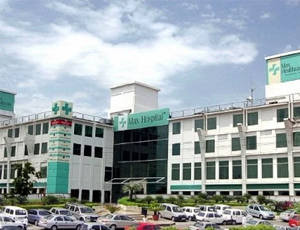
Max Hospital (Gurgaon branch), one of the top medical facilities in India, was established in 2007. Max Gurgaon Hospital is the first multi, super specialty tertiary care in the Location. Out of many other awards, the hospital also possesses the Express Healthcare Awards for Excellence in Healthcare. It is also certified to ISO 9001:2000 standards. The Institute of Minimal Access, Metabolic & Bariatric Surgery at Max Gurgaon has been designated as a Center of Excellence for providing cutting-edge Clinical Services and Surgical Training Programs for Abdominal Wall Hernia Surgery.
Over 5 lakh patients have been treated at the 92-bed Max Hospital Gurugram, which holds expertise in 35 specialized fields such as Cardiac Sciences, Minimal Access, Laparoscopic Surgery, Neurosciences, Urology, Orthopaedics, Aesthetics, Reconstructive Surgery, and Nephrology. The laboratories at Max Healthcare hospitals are accredited by NABH and NABL. It also provides hemodialysis for patients who have end-stage kidney disease and requires renal replacement therapy. Team of doctors and nurses at the hospital provides integrated medical care in a multi-disciplinary setting. As a result, it has received multiple awards and accreditations.
International patients have been treated impeccably here as all the nursing staff, shift doctors, and treating doctors are quite courteous and supportive towards the patients. There is no doubt that being in the hospital can make you feel at home.
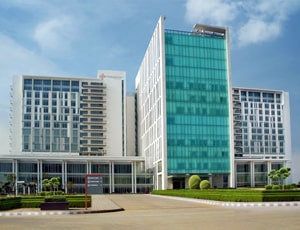
Types of Carpal Tunnel Release in Medanta - The Medicity and its associated cost
| Treatment Option | Approximate Cost Range (USD) | Approximate Cost Range (INR) |
|---|---|---|
| Carpal Tunnel Release (Overall) | 2782 - 4492 | 232726 - 369140 |
| Open Carpal Tunnel Release | 1655 - 3410 | 138776 - 281836 |
| Endoscopic Carpal Tunnel Release | 3163 - 4476 | 257322 - 373805 |
DOCTORS IN 14 SPECIALITIES
FACILITIES & AMENITIES
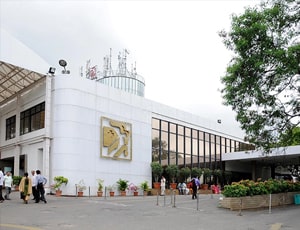
Types of Carpal Tunnel Release in Apollo Hospitals and its associated cost
| Treatment Option | Approximate Cost Range (USD) | Approximate Cost Range (INR) |
|---|---|---|
| Carpal Tunnel Release (Overall) | 2804 - 4486 | 230034 - 364635 |
| Open Carpal Tunnel Release | 1702 - 3349 | 140230 - 280282 |
| Endoscopic Carpal Tunnel Release | 3128 - 4532 | 261576 - 360854 |
DOCTORS IN 14 SPECIALITIES
FACILITIES & AMENITIES
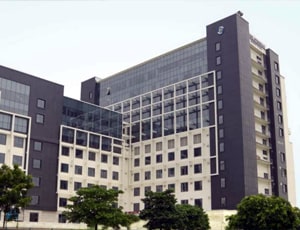
Types of Carpal Tunnel Release in Venkateshwar Hospital and its associated cost
| Treatment Option | Approximate Cost Range (USD) | Approximate Cost Range (INR) |
|---|---|---|
| Carpal Tunnel Release (Overall) | 2536 - 4058 | 208330 - 332673 |
| Open Carpal Tunnel Release | 1521 - 3051 | 125070 - 249409 |
| Endoscopic Carpal Tunnel Release | 2829 - 4043 | 232825 - 331503 |
DOCTORS IN 13 SPECIALITIES
FACILITIES & AMENITIES
The treatment for carpal tunnel syndrome depends on the severity of the condition and the duration of the symptoms. Generally, the physicians first recommend non-surgical interventions such as the use of corticosteroid injections and wrist splints to relieve the symptoms of carpal tunnel syndrome.
A carpal tunnel treatment surgery is recommended in case:
The carpal tunnel treatment surgery is an open technique. The surgeon may make a cut in the transverse carpal ligament that forms the roof of the tunnel. The carpal tunnel treatment allows more room for the median nerve and the tendons to pass through the tunnel. Thereby, the pressure on the nerve is reduced causing relief from the symptoms.
Carpal tunnel surgery is a simple outpatient procedure. You can go to the hospital, get the surgery done, and walk back to home on the same day.
On the day of the surgery, the area to be operated is cleaned with an antiseptic solution to avoid the chances of contracting an infection. The anesthetist administers a local anesthetic injection to numb the wrist area. This is done so that you do not experience any pain during the procedure.
A small cut is made in the palm near to the wrist area. Once the transverse carpal ligament is visible, a small cut is made in the ligament. This relieves the pressure on the nerve. The skin is put back and stitched together in its original position. A bandage is placed on the palm.
The following are the two alternatives to the open carpal tunnel surgery:
Endoscopic carpal tunnel surgery: The surgical procedure is similar to that of open surgery but the entire surgery is performed by looking at the camera. A small incision is made and small instruments with a camera attached to them are placed inside. The incision is small and damage is minimal. It gives you a chance to recover faster than the open technique. The healing is better and minimal pain is felt.
Key hole surgery: In this procedure, a smaller incision than normal is made on the palm. A special instrument with a light at one end and microscope at the other end is placed. This gives the doctor a chance to see the carpal ligament and carefully guide the tools to cut the targeted area.
The symptoms are usually relieved immediately after the surgery or in most cases, within a few months. You may feel numbness in the fingers for the next 15 to 16 hours.
The time you take to recover from carpal tunnel surgery depends on the severity of symptoms you had before the treatment.
Ask your healthcare adviser for the best multiple options and choose the one that meets your expectations
The cost of Carpal Tunnel Release in India starts from USD$ 2541. Carpal Tunnel Release in India is available across many hospitals in different states.
Carpal Tunnel Release package cost in India has different inclusions and exclusions. The Carpal Tunnel Release package cost usually includes all the expenses related to pre and post surgery expenses of the patient. The treatment cost usually includes the expenses related to hospitalization, surgery, nursing, medicines, and anesthesia. A prolonged hospital stay due to delayed recovery, new diagnosis and complications after surgery may increase the cost of Carpal Tunnel Release in India.
There are several best hospitals for Carpal Tunnel Release in India. The following are some of the most renowned hospitals for Carpal Tunnel Release in India:
The recovery of the patient many vary, depending on several factors. However, on an average, patient is supposed to stay for about 14 days in the country after discharge. This is important to ensure that the surgery was successful. During this time, control and follow-up tests take place to check for medical fitness.
One of the topmost destinations for Carpal Tunnel Release is India. It has a variety of accredited hospital, affordable cost of treatment and some of the best medical fraternity. Some of the other destinations that are popular for Carpal Tunnel Release include the following:
There are certain additional cost that the patient has to pay apart from the Carpal Tunnel Release cost. These include the cost of accommodation and meals outside hospital. The per day cost in this case may range around USD$ 25.
There are many cities that offer Carpal Tunnel Release in India, including the following:
After Carpal Tunnel Release, the patient is supposed to stay for about 1 days in the hospital for recovery and monitoring. This time frame is important for the patient to recover properly and feel comfotable after the surgery. With the help of several tests, it is determined that the patient is doing fine after the surgery and is okay to be discharged.
The average rating for Carpal Tunnel Release hospitals in India is 4.6. This rating is calculated based on several parameters such as hygiene, politeness of staff, infrastructure and quality of services.
Out of all the hospitals in India, there are about 64 best hospitals for Carpal Tunnel Release. These hospitals are approved to perform the surgery and have proper infrastructure to handle Carpal Tunnel Release patients.
The average cost of carpal tunnel release surgery in India is $3000.
The success rate of carpal tunnel surgery in India is very high. For instance, regarding the alleviation of symptoms about 90% and the recurrence rate after primary carpal tunnel release is about 2%.